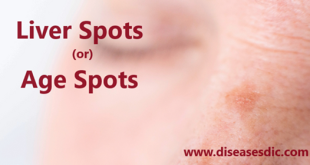Description of stomatitis
The term stomatitis means inflammation of the mouth. It usually refers to all the mucosal linings of the mouth including the cheeks, tongue, and gums. Stomatitis can be painful and result in sores. The two most common sores are canker sores and cold sores. Aphthous stomatitis is usually defined as canker sores that recur on a somewhat regular basis and is a fairly common condition.
Types
There are two main types of stomatitis:
Canker sores
- These are also known as aphthous ulcers and are part of the most common cause of stomatitis. The sores are pale white or yellowish in color with a red outer ring.
- Canker sores can develop singly or in a cluster and usually occur on the inside of the lips or cheek, or on the tongue.
- Canker sores lead to acute, temporary pain. In minor cases, which are the most usual, the ulcers heal within 4-14 days. In more severe cases, which account for about 1 in 10 of all cases of stomatitis, the sores can last up to 6 weeks.
- Anyone can get canker sores, although women and people in their teens and 20s are more likely to experience them. They can run in families but are not contagious.
Cold sores
- Cold sores are small, painful, fluid-filled sores that usually occur on or around the lips near the edge of the mouth. Caused by the herpes virus (HSV), the condition is also known as herpes stomatitis.
- A person may experience a tingling or burning sensation before the sore appears, as well as tenderness. Cold sores dry up and crust over with a yellow-colored scab.
- Cold sores tend to last for around 5-7 days and can keep coming back. They are also very contagious.
Stomatitis can be broken down into different categories, depending on which area of the mouth is affected:
- Cheilitis – Inflammation of the lips and around the mouth
- Glossitis – Inflammation of the tongue
- Gingivitis – Inflammation of the gums
- Pharyngitis – Inflammation of the back of the mouth
Pathophysiology of stomatitis
The oral mucosa is relatively resistant to irritants and allergens due to the following anatomical and physiological factors:
- High vascularization that favors absorption and prevents prolonged contact with allergens
- The low density of Langerhans cells and T lymphocytes
- Dilution of irritants and allergens by saliva that also buffers alkaline compounds
What causes the onset of stomatitis?
An infection of the herpes simplex 1 (HSV-1) virus causes herpes stomatitis. It is more common in young children between the ages of 6 months and 5 years. People exposed to HSV-1 may develop cold sores later in life as a result of the virus. HSV-1 is related to HSV-2, the virus that causes genital herpes, but it isn’t the same virus.
Aphthous stomatitis can be one or a cluster of small pits or ulcers in the cheeks, gums, the inside of the lips, or on the tongue. It’s more common in young people, most often between 10 and 19 years of age.
Aphthous stomatitis is not caused by a virus and is not contagious. Instead, it’s caused by problems with oral hygiene or damage to mucous membranes. Some causes include:
- Dry tissues from breathing through the mouth due to clogged nasal passages
- Small injuries due to dental work, accidental cheek bite, or other injuries
- Sharp tooth surfaces, dental braces, dentures, or retainers
- Celiac disease
- Food sensitivities to strawberries, citrus fruits, coffee, chocolate, eggs, cheese, or nuts
- Allergic response to certain bacteria in the mouth
- Inflammatory bowel diseases
- Autoimmune diseases that attack cells in the mouth
- HIV/AIDS
- Weakened immune system
- Deficiency in vitamin B-12, folic acid, iron, or zinc
- Certain medications
- Stress
- Candida albicans infection
Risk Factors
- Genetic factors
- Food hypersensitivities/allergens; common ones include nuts; shellfish; cinnamon; fruits; metals; dental materials; and ingredients in toothpaste, mouthwash, and gum.
- Local trauma: poor-fitting dentures, tooth brushing, local anesthetic injection, dental work
- Hormonal changes (menstrual cycle, pregnancy, and dysmenorrhea)
- Stress/anxiety
- Nutritional deficiencies (iron, folate, ferritin, vitamin B6, vitamin B12)
- Tobacco cessation
- Medications, for example, methotrexate, NSAIDs, phenobarbital
- Immunologic: HLA-B12
- Immunologic gastrointestinal diseases: Crohn disease, celiac disease
- Systemic diseases: Behçet syndrome; cyclic neutropenia; HIV infection; periodic fever, aphthous stomatitis, pharyngitis, cervical adenitis (PFAPA); reactive arthritis; Sweet syndrome; mouth and genital ulcers with inflamed cartilage (MAGIC) syndrome
- Cancer therapies
Clinical manifestations of stomatitis
Stomatitis often results in pain, stinging, and soreness. Each person may experience different symptoms. These can include:
- Mouth ulcers with a white or yellow layer and red base, usually inside the lips, cheek, or on the tongue
- Red patches
- Blisters
- Swelling
- Oral dysaesthesia – a burning feeling in the mouth
- Lesions that heal in 4-14 days and often recur
Complications of stomatitis
Some complications of stomatitis include:
Life-threatening complications
- Meningoencephalitis
Other Common Complications
- Recurrent skin and mouth infections
- Dissemination of the infection
Noma Complications
- Teeth loss
How your doctors diagnose stomatitis?
History
A patient will complain of pain, burning sensation, intolerance to temperature extremes, and irritation with certain foods.
During the review of clinical history, determine the onset, progression, number of ulcers/lesions, size of lesion, duration of each lesion, frequency, size, and whether it heals with a scar or not. This information helps diagnose localized versus systemic lesions.
Physical Exam
The physical exam should include a comprehensive oral examination. The extraoral exam includes inspection and palpation of cervical lymph nodes. Examine and palpate the lips, tongue, cheeks, and hard and soft palate as well as cervical, submandibular, and submental lymph nodes. Erythema and edema are the usual oral manifestations, often with ulcerations. Some will have constitutional symptoms: low-grade fever, malaise, lymphadenopathy, and headache. The pain will vary.
Tests might include:
- Swabs, both bacterial and viral
- Tissue scrapings or swabs for fungal infections
- Biopsy, or the removal of cells or tissue for further study
- Blood tests
- Patch tests to identify allergy
Treatment for common forms of stomatitis
Mouth sores generally don’t last longer than two weeks, even without treatment. If a cause can be identified, your doctor may be able to treat it. If a cause cannot be identified, the focus of treatment shifts to symptom relief.
The following strategies might help to ease the pain and inflammation of mouth sores:
- Avoid hot beverages and foods as well as salty, spicy, and citrus-based foods.
- Use pain relievers like Tylenol or ibuprofen.
- Gargle with cool water or suck on ice pops if you have a mouth burn.
For canker sores, the aim of treatment is to relieve discomfort and guard against infection. Try the following:
- Drink more water.
- Rinse with saltwater.
- Practice proper dental care.
- Apply a topical anesthetic such as lidocaine or xylocaine to the ulcer (not recommended for children under 6).
- Use a topical corticosteroid preparation such as triamcinolone dental paste (Kenalog in Orabase 0.1%), which protects a sore inside the lip and on the gums.
- Blistex and Campho-Phenique may offer some relief of canker sores and cold sores, especially if applied when the sore first appears.
For more severe sores, treatments may include:
- Lidex gel
- Aphthasol, an anti-inflammatory paste
- Peridex mouthwash
If you seem to get canker sores often, you may have a folate or vitamin B12 deficiency. Talk to your doctor about being tested for these deficiencies.
Anti-inflammatory drugs such as corticosteroids (including prednisone) are the most effective treatment for canker sores, as they will reduce swelling and pain. They are also effective for cold sores after the sore has been present for three to four days because at that point the virus has disappeared and only the inflammation remains.
Not all people can take certain types of anti-inflammatory drugs. For example, if prednisone is given to people with diabetes, their blood sugars will go up. Talk to your doctor about any health conditions you have before starting a new medication.
There is no cure for cold sores. Treatment includes:
- Taking a dose of valacyclovir (Valtrex) at the first sign of an attack
- Coating the lesions with a protective ointment such as an antiviral agent (for example, 5% acyclovir ointment)
- Applying ice to the lesion
Taking L-lysine tablets may also help, as might antiviral mediations that a doctor prescribes. Some experts believe that these drugs shorten the time that the blisters are present.
Not all sores are harmless. Schedule an appointment with your doctor if your mouth sores haven’t healed within two weeks.
Prevention of Stomatitis
About 90% of the population carries HSV. There’s little you can do to prevent your child from picking up the virus sometime during childhood.
Your child should avoid all close contact with people who have cold sores. So if you get a cold sore, explain why you can’t kiss your child until the sore is gone. Your child should also avoid other children with herpetic stomatitis.
If your child has herpetic stomatitis, avoid spreading the virus to other children. While your child has symptoms:
- Have your child wash his/her hands often.
- Keep toys clean and don’t share them with other children.
- Don’t allow children to share dishes, cups, or eating utensils.
- Don’t let your child kiss other children.
 Diseases Treatments Dictionary This is complete solution to read all diseases treatments Which covers Prevention, Causes, Symptoms, Medical Terms, Drugs, Prescription, Natural Remedies with cures and Treatments. Most of the common diseases were listed in names, split with categories.
Diseases Treatments Dictionary This is complete solution to read all diseases treatments Which covers Prevention, Causes, Symptoms, Medical Terms, Drugs, Prescription, Natural Remedies with cures and Treatments. Most of the common diseases were listed in names, split with categories.








can you please provide list of medicine that can be proscribed with this disease?
Lidex gel
Aphthasol, an anti-inflammatory paste
Peridex mouthwash
the best thing for this mouth infection is Katha only.pan shop is available
would you please prescribe the drugs for this condition with the dosages.
Apply a topical anesthetic such as lidocaine or xylocaine to the ulcer (not recommended for children under 6). Use a topical corticosteroid preparation such as triamcinolone dental paste (Kenalog in Orabase 0.1%), which protects a sore inside the lip and on the gums.
We advise you to contact a doctor for an appropriate prescription of drugs.
What other tabs can be used when acyclovir fails to work?
Apply a topical anesthetic such as lidocaine or xylocaine to the ulcer (not recommended for children under 6). Use a topical corticosteroid preparation such as triamcinolone dental paste (Kenalog in Orabase 0.1%), which protects a sore inside the lip and on the gums.
Thank you for this app. Before seeing a doc it is easy to know about what kind of disease you are suffering.from. in this period of Coronavirus confinement it’s a must
I usually use bicarbonate. I wash my mouth with it. it’s very effective.
what medicine can cure it
If the condition is due to a viral infection, antiviral medications may be prescribed. For bacterial infections, antibiotics may be recommended. Anti-inflammatory drugs or corticosteroids can help reduce inflammation. Additionally, maintaining good oral hygiene and using topical oral treatments, such as mouthwashes or gels, may provide relief. It’s crucial to consult with a healthcare professional for an accurate diagnosis and appropriate treatment plan tailored to the specific cause of stomatitis.